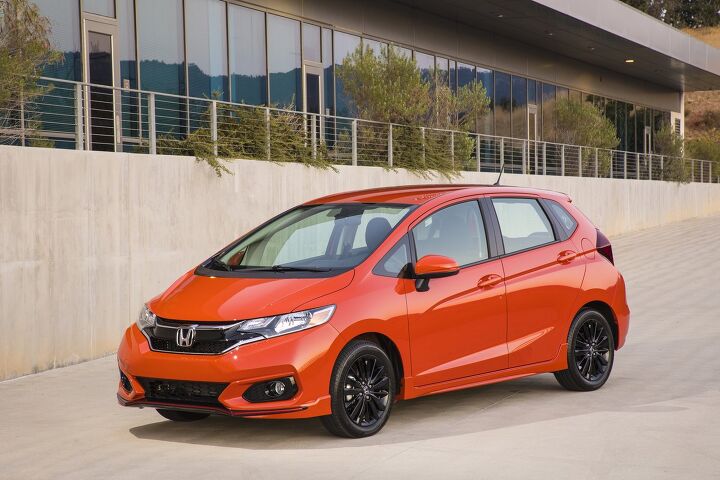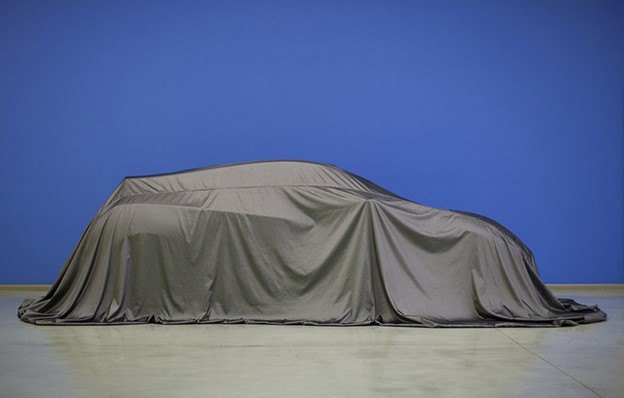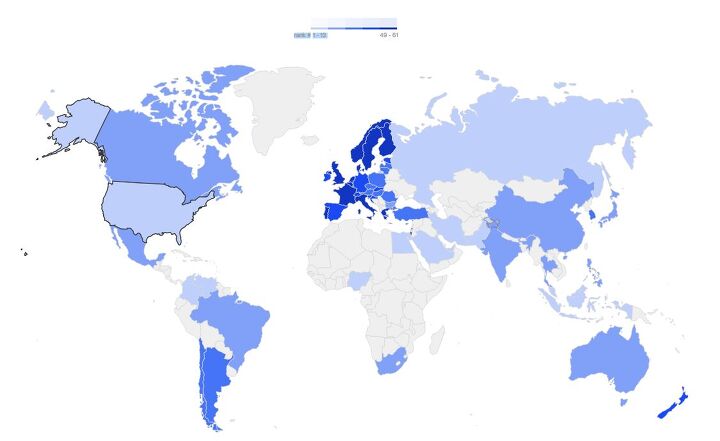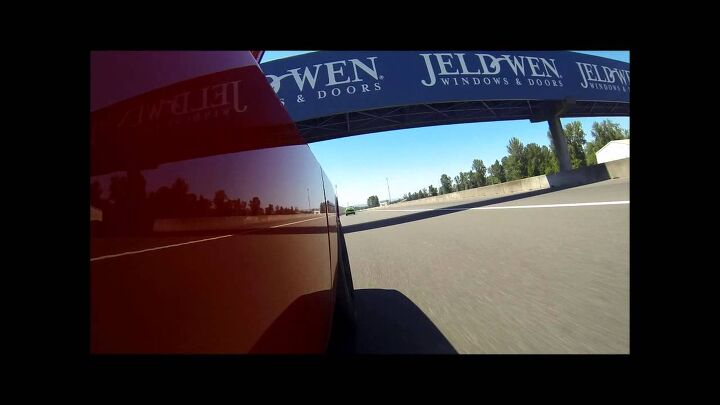#Analysis
IIHS Takes a Dump on Semi-Autonomous Cars, Then Impositions Drivers
The Insurance Institute for Highway Safety (IIHS) has said it is developing a new rating system to evaluate the existing safeguards found inside vehicles equipped with partial automation. Considering how commonplace advanced driving aids have become, you might be thinking this was long overdue. However, insurers were blindly praising advanced driving suites a few years ago — until they actually started testing them in earnest.
As luck would have it, there’s been mounting research supporting claims modern automotive tech encourages drivers to tune out and become distracted. While this wouldn’t be a big deal if the relevant features all functioned perfectly, the reality is that most are far less effective than advertised and practically all of them run the risk of being completely undone by inclement weather or poor lighting. Confusingly, the IIHS believes the best solution here is to make sure systems constantly monitor the driver to ensure the driver is constantly monitoring the system.
Analysis: Ram and Dodge and the J.D. Power Initial Quality Study
It’s been a few months now, so I’ve had plenty of time to get used to it — and yet, it still seems wrong. It feels factually wrong, emotionally wrong, and just wrong wrong. What is “it”, you ask? It’s this: Ram and Dodge topped the 2021 J.D. Power Initial Quality Study, ahead of Lexus, Mitsubishi, and Nissan.
If someone told me, “The most reliable new cars you can buy are Rams, Dodges, Lexuses (Lexii?), Mitsubishis, and Nissans …” well, I’m not sure how you’d respond, but I would assume they sold Rams, Dodges, Mitsubishis, and Nissans, and just threw Lexus in there to give the list some credibility.
I won’t go as far as Brightwork Research in calling J.D. Power “a fake entity”, but my gut tells me that there has to be more to JDP’s Initial Quality Study than — well, initial quality — that’s pushing weird brands up in the ranking, and I’ve decided to do a little more research to find out what. If you’re as curious as I am, keep reading.
Analysis: What's the Opposite of Reducing Your Carbon Footprint?
Why are we switching to electric cars? I mean, I’m not talking about the need to “do better” when it comes to Mother Earth and the baby kangaroos — even Randy Newman wouldn’t bomb the baby kangaroos — but are EVs and billions spent to lower prices and build chargers for the things really going to make the world better if people just look at them as a way to have their cakes and eat them, too? To put it another way, are you really reducing your carbon footprint behind the wheel of a 9,046 lb. GMC Hummer pickup?
That’s right, kids. The upcoming all-electric Hummer will tip the scales at more than 4.5 tons — and that’s “just” the pickup. The SUV will probably weigh more since it’ll be hauling around more glass, seats, and carpets than the pickup. Despite having enough mass to generate its own gravity, the GMC-badged truck can rocket to 60 mph in under 4 seconds, and effectively crush its way through untouched, virgin wilderness in a manner worthy of its heritage as an Army man cosplay favorite (Punisher window sticker not included).
It’s almost enough to make me throw my hands up and say, “Why bother!?” And that, dear B&B, led me to ask myself the question: What would I drive if I just didn’t give a f***?
Average Automotive Pricing Window Continues Shifting Upwards
Now that fuel prices are popping off and it’s becoming glaringly obvious that we’re falling into another recession, one would hope that automakers would be prioritizing their more economical models. Unfortunately, most manufacturers operating in North America spent the last decade culling the smallest models from their lineup. Domestic brands took the practice so far that several no longer offer traditional cars, opting instead for compact crossover vehicles yielding higher price tags and broader profit margins. Foreign brands were only marginally more reserved with the ax.
This has helped move the average vehicle transaction price beyond $42,000 in the United States, according to Edmunds, with used rates sitting somewhere around $28,000. Though the cause isn’t entirely down to there being a complete lack of econoboxes on the market. Increased regulations and the industry’s newfound obsession with connectivity/tech have also increased pricing. But it doesn’t change the fact that we’re now confronting a situation where almost nobody is selling the kind of small, affordable vehicles that cater to shoppers needing to be thrifty right when they really need them.
Study: Automotive Debt Is Out of Control, You're Being Swindled
Consumer Reports just released the findings of a year-long stud y looking into the latest trends in automotive loans and car payments. The resulting information highlights just how explosive the debt growth has been over the last 10 years and the arbitrary way in which borrowers are now being treated.
Long story short, we’re all being swindled.
With vehicle prices ballooning and the associated loans becoming longer than ever, dealers and lenders seem to be operating whatever way yields the steepest profit margins with only a modicum of consideration being given to the established frameworks designed to act as a guard rail. This has led to U.S. citizens carrying around a record $1.37 trillion in automotive load debt and customers with good credit being treated no different than those that fall into the subprime category. Sadly, the issue appears only appears to be worsening as new economic perils are only making things more expensive. Meanwhile, data from the Federal Reserve Bank of New York is projecting national auto debt to swell to $1.42 trillion by year’s end.
Analysis: How Rivian Beat EVERYONE to Market With the First Electric Pickup
Barely a month has passed since Rivian’s CEO first posted pictures of the company’s fully certified, in-production R1T electric pickup rolling down the Normal, Illinois assembly line. The R1T is here, it’s real, and it’s got the blessing of the NHTSA, EPA, and CARB to prove it – but the fact that the R1T made it to production more-or-less as promised isn’t what I’m here to talk about today.
Instead, I want to talk about how a brash, spunky startup managed to beat not just Ford, and not just GM, but every single established automaker to market to deliver the first modern electric pickup truck … and the answer might not be what you expect.
Hyundai Blue Link Connects Owners and Insurance
Hyundai Blue Link, a connected-car service first offered in 2018, can now be used to save on auto insurance. Hyundai’s usage-based insurance (UBI) program and Driving Score promotes safe, efficient driving habits. Through Verisk, a global data analytic firm, Hyundai drivers can opt-in to share their driving quirks. Receiving substantially lower insurance rates is the hope of most drivers.
U.S. Sales Slide Bottoms Out; Pickups Keep Things Afloat While Compact Car Customers Stay Away in Droves
Thanks to our friends at J.D. Power, we’ve been able to offer up weekly insights into the greatest disruption to the nation’s auto industry since World War 2. It’s a volatile time, with major changes occurring week to week, rather than over the course of months and years, and the disruption remains highly dependent on region and the legislative proclamations of various states.
Last week’s sales results tell us the great weakening of the U.S. new vehicle market has reached rock bottom, with no signs of further digging. It’s also not as deep a trench as the firm’s analysts predicted.
Global Gas Prices: Where Do We Fit?
You’ve no doubt noticed that gas prices have been creeping up while 2018 progresses. But North America still has it pretty good, especially the United States. Despite fuel prices creeping up to almost $3.00 per gallon, the U.S. still enjoys cheaper gasoline than most of the Western world. Even Canada, which is currently coasting around $4.45 per gallon, manages to undercut the nightmare that is Europe by a wide margin.
North America as a whole spends more on gas per person then practically everywhere else on the globe, though. An affinity for larger vehicles, combined with more time spent behind the wheel, translates into burning more fuel overall. I suppose one could make the argument that we need cheaper petroleum since we use so much of it — just be ready to have someone call you selfish.
For example, the United Kingdom has prices set around $6.59 for a gallon of that good stuff but the average citizen only uses 69.67 gallons a year. However, the average American turns 429 gallons of gasoline into forward motion.
Ramcharger Rebirth
In October, FCA CEO Sergio Marchionne addressed a group of automotive analysts, where he was quoted as follows.
“We have a unique opportunity with renewal of the [Ram] pickup line, with the powertrains we selected, to significantly increase output. We will also be exploring, as a result of that investment, some other segments.”
Speculation related to a full-size Ram 1500-based SUV has been swirling ever since. And there is no denying the allure of $10,000 per unit margins. But what is the business case?
In short, it looks promising.
Vellum Venom: 1988 Jaguar XJS
One of my CCS Design professors had a saying: it’s all about Proportion, Proportion, Proportion. Just typing that makes me cringe. Perhaps it’s a popular phrase for car design wonks, or a riff from the restaurant business.
However, the theory is valid: Imagine if the Pontiac Aztek was proportioned a la Range Rover Evoque. It’s a fair notion. If that were the case, the Aztek may not have been bound for every “Top 100 Ugliest Cars” list since 2000.
Proving the theory is this 1988 Jaguar XJS. It’s a beautiful grand touring coupe because the proportions are right.
Toyota, Honda Dominate List of Cars Kept for More Than 10 Years
Nearly 30 percent of buyers who purchase a Honda CR-V, Toyota RAV4 or Prius car will keep that car for more than 10 years, according to data from iSeeCars.com.
Data from 400,000 car purchases was analyzed for the poll, according to the study group. The industry average for owners keeping their cars 10 years or longer was 13.5 percent.
Of those top 15 vehicles whose buyers keep them longer than a decade, nine of them were Toyotas; 5 were made by Honda. The Honda CR-V was tops at 28.6 percent of buyers who kept that car for 10 years or more.
Vellum Venom: 2014 Mitsubishi Mirage ES
Design School forces considerations outside of a student’s artistic comfort zone: a unique price, demographic, or geography for starters. Just don’t present a pragmatic design based in sociocultural fact: a conventional sedan for the Indian market–isolating the wealthy from their hired help and their untouchable luggage—was a fantastically stupid mistake. Cultural and profit-minded relevance aside, that’s the not-so-secret secret I’ve mentioned before in this series. Cars are made under a litany of profit-minded constraints, no matter what they may teach in design school.
And some thrive in their design constraints.
Track Analysis: Challenger V6 Track Pack, HEMI Scat Pack, SRT Hellcat
Getting decent conclusions from very limited data is the sort of thing of which Nobel Prizes are made. What you’re about to read won’t be Nobel-worthy; however, I believe it will help you understand how fast the Hellcat and how it compares to both the other Challengers and the external competition.
Vellum Venom: 2013 Lincoln MKZ
Car Design college was a wake-up call for this auto-obsessed kid: it festered with two-faced people. There are bastard-coated souls smiling to your face, stabbing you in the back during Portfolio Review. Or friends that pity you, being your crutch via white lies and false kindness. Bad news, especially for a Lincoln-Mercury fanboi saddened by how the MKZ became as two-faced as the industry that spawned it.





























Recent Comments